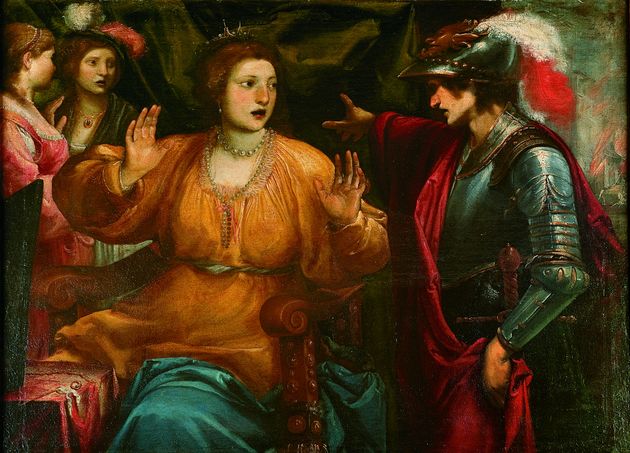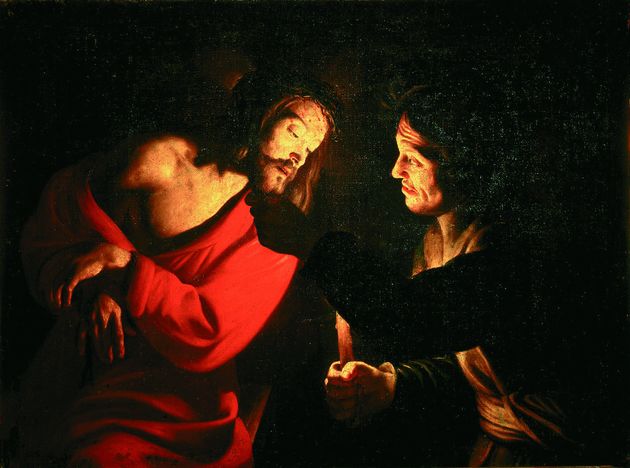Prudence holds the mirror which imposes self-knowledge and the snake (“Be ye therefore prudent as snakes”, Matthew 10:16); Faith, is represented with the Christian symbols of the cross and the chalice with the host; Temperance is depicted while eliminating excesses, pouring water in the wine goblet. The three figures, well identified by the age-old traditional attributes, resemble engravings in their graphic, refined elegance. The uniform niche-like background underlines the statuesque poses which are rendered dynamic by the sinuous, marked lines and the cold, iridescent colours that seem to be soaked in a strong light.
Butteri collaborated for a long time with Alessandro Allori, and they both had previously been pupil of Bronzino. Butteri took inspiration by Allori’s style, adding a greater stylisation of the forms and a decisiveness in the draughtsmanship, which he had perhaps developed in his designs for the Medici tapestries. He worked for the grand ducal court, often painting furnishings and decorations for weddings and other celebrations, and it is likely that also the three Prato canvases were part of a greater cycle of ceremonial decorations.
Giovan Maria Butteri had other different commissions in the Pratese territory: fot the Spedale della Misericordia e Dolce he painted a big coat of arms with the emblem of Ferdinand I de’ Medici, now preserved in the Municipal Town Hall. The Badia in Vaiano preserves his altarpiece with the Madonna and Child painted around 1586, together with his Crucifix. In addition, he probably supplied the drawing for the refined Altar Frontal of Saint Stephen (in the Opera del Duomo Museum), donated by Cardinal Alessandro de’ Medici, the future Pope Leo XI.






























